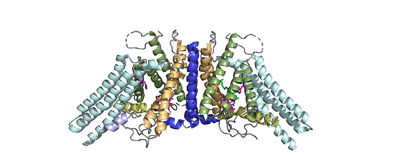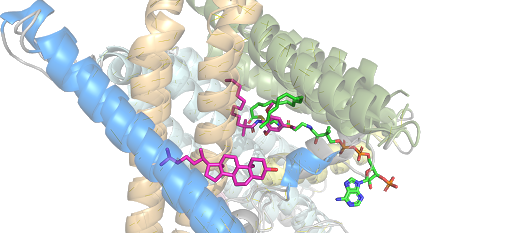Introduction
ACAT Wikipedia
History
Disease
Alzheimer's Disease
Alzheimer's Disease is a neurodegenerative disease characterized by accumulation of extracellular plaques that cause interferences with memory retrieval. These plaques are made up of amyloid beta (Aβ) peptides which are products of the cleavage of human Amyloid Precursor Protein (hAPP) [1] [2]. Within the cells, there is an accumulation of hyperphosphorylated tau [1] [2]. Research has shown that the concentration of cholesterol within cells can affect the production of Aβ [1] [2]. As the concentration of cholesterol in the endoplasmic reticulum of neurons increases, hAPP is downregulated [1][2]. Inhibition of ACAT1 would lead to higher concentrations of cholesterol in the cells, signaling downregulation of hAPP. Less hAPP available decreases the amount of Aβ peptides being produced and decreases the available Aβ peptides that could form the extracellular plaques associated with Alzheimer's Disease [1] [2].
Other Diseases
ACAT is also involved in diseases such as Parkinson’s and other neurodegenerative diseases due to the accumulation of Aβ plaques in the brain. After research on glioma, prostate, pancreatic, leukemia, and breast cancers, it has been noted that ACAT plays a role in the progression of cancer over time. Recently, Ayyagari et al. found that there was a significant increase in ACAT-1 expression in ovarian cancer cell lines [3]. ACAT-2 is believed to be upregulated in Nephrotic Syndrome (NS) which can lead to cardiovascular disease and renal diseases [4]. Because of ACAT's activity in tissues such as the aorta, intestine, and liver, it plays a role in Atherosclerosis [5]. Studies have shown that the inhibition of ACAT-2 can slow the progression of Atherosclerosis [5].
Mutations
Within ACAT, at codon 265 a change from serine to leucine renders the enzyme inactive [6].
Relevance
Function
Structural highlights


